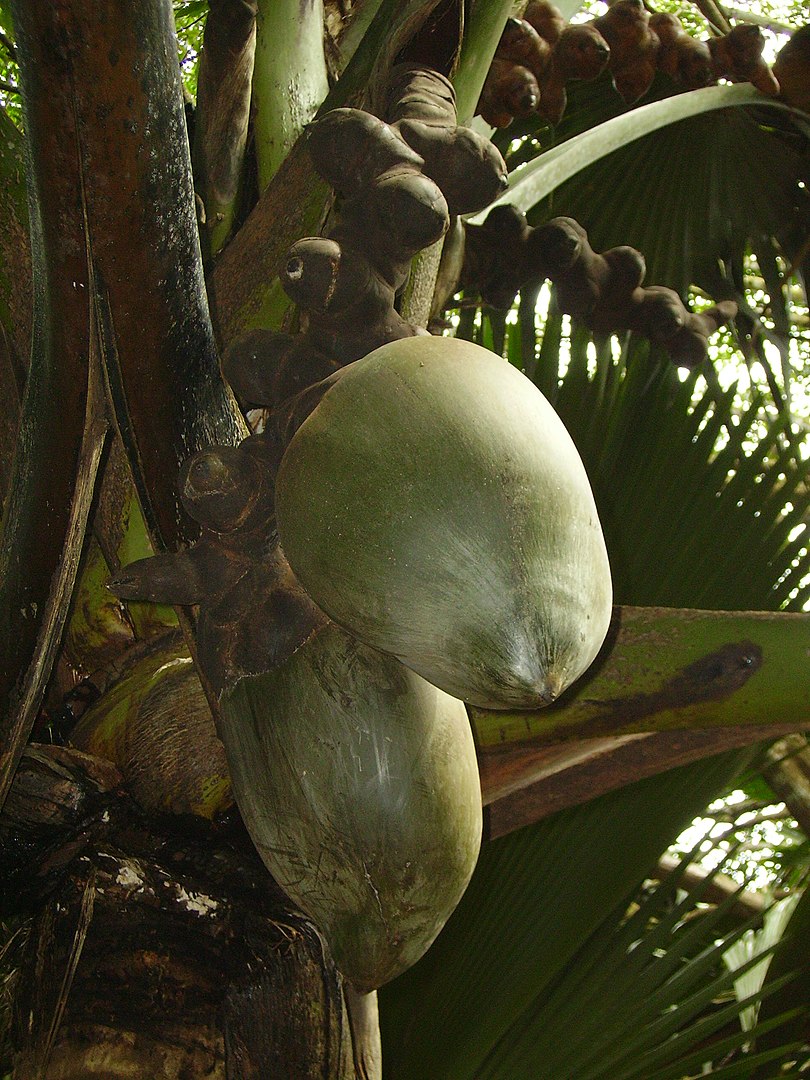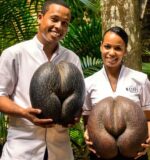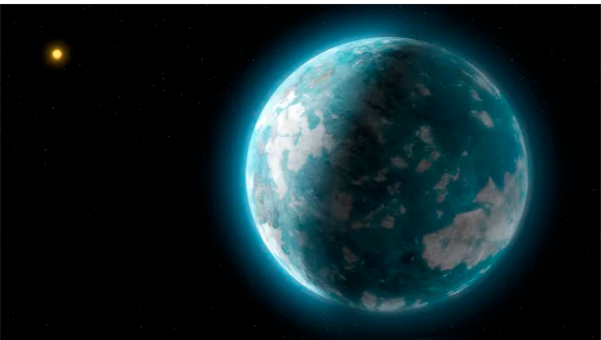On the gorgeous islands of the Seychelles in the Indian Ocean grows a legendary palm, known for producing the largest and heaviest seeds in the world.

With their rather suggestive shape and impressive weight of about 25kg (55 lbs), the seeds of the double coconut, or coco-de-mer, measure up to half a metre long. This type of palm, Lodoicea maldivica, is the sole species in its family that’s endemic to the islands of Praslin and Curieuse in the Seychelles. Formerly, it was also found on the small islets of St Pierre, Chauve-Souris, and Ile Ronde (Round Island), all located near Praslin, but had become extinct there for a time until recently reintroduced.
According to legend, the double coconut has medicinal properties, but this remains unproven. Notwithstanding, the palm remains of high interest as an aesthetic wonder, with single nuts currently sold for £500-£2,000!

Unfortunately, similarly to many other plants the double coconut has been overharvested, and now there are only around 8,000 wild mature specimens remaining on just the two islands of Praslin and Curieuse. Therefore, the species is listed as Endangered on the IUCN Red List of Threatened Species.
It is no surprise, therefore, that the seeds of this precious palm growing in the wild – and in botanical gardens worldwide that have manged to grow them – are guarded carefully, sometimes even placed in a cage, to prevent poaching.

Some palms closely related to the double coconut also produce some of the world’s largest seeds, far larger than most other palm seeds – though much smaller than those of the double coconut (up to 10cm long).
Studying this amazing species could provide scientists the key to understanding the evolutionary forces that lead plants to produce very large seeds. Let’s hope we’ll know more about them soon!








 Photographer Finds Locations Of 1960s Postcards To See How They Look Today, And The Difference Is Unbelievable
Photographer Finds Locations Of 1960s Postcards To See How They Look Today, And The Difference Is Unbelievable  Hij zet 3 IKEA kastjes tegen elkaar aan en maakt dit voor zijn vrouw…Wat een gaaf resultaat!!
Hij zet 3 IKEA kastjes tegen elkaar aan en maakt dit voor zijn vrouw…Wat een gaaf resultaat!!  Scientists Discover 512-Year-Old Shark, Which Would Be The Oldest Living Vertebrate On The Planet
Scientists Discover 512-Year-Old Shark, Which Would Be The Oldest Living Vertebrate On The Planet  Hus til salg er kun 22 kvadratmeter – men vent til du ser det indvendigt
Hus til salg er kun 22 kvadratmeter – men vent til du ser det indvendigt  Superknepet – så blir snuskiga ugnsformen som ny igen!
Superknepet – så blir snuskiga ugnsformen som ny igen!  Meteorite That Recently Fell in Somalia Turns Out to Contain Two Minerals Never Before Seen on Earth
Meteorite That Recently Fell in Somalia Turns Out to Contain Two Minerals Never Before Seen on Earth  Nearly Frozen Waves Captured On Camera By Nantucket Photographer
Nearly Frozen Waves Captured On Camera By Nantucket Photographer  It’s Official: Astronomers Have Discovered another Earth
It’s Official: Astronomers Have Discovered another Earth 
zq618o
4o1loz
g2mcup
7fomx1
v7xzli